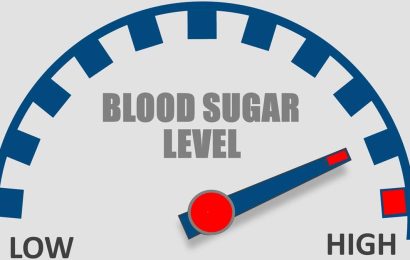Blood glucose monitoring is an essential part of your treatment plan when you have diabetes. Your blood glucose numbers are important to help you and your diabetes care provider make the best decisions for optimal blood glucose targets. Self-management of values outside your target range can provide you with direction for immediate action. Blood glucose management over time can help you prevent or delay long-term complications, such as diabetes-related eye disease, diabetic kidney disease, and nerve damage associated with diabetes. Additionally, your diabetes care team relies on timely and accurate glucose values to provide recommendations regarding your treatment plan. This article provides information about the use of external continuous glucose monitors (CGMs) for diabetes management.
Personal CGM for diabetes management
A continuous glucose monitor — typically referred to as a CGM — is a system that measures interstitial glucose levels (glucose in the fluid between cells) on a continuous basis throughout the day and night. The CGM system is made up of a sensor, a transmitter, and a receiver. A tiny sensor about a half-inch long is inserted just below your skin, usually on your belly or arm. From there, an electrode measures your interstitial glucose levels within the tissue fluid rather than directly from your blood. A transmitter attached to the sensor sends glucose information to a wireless receiver. This receiver displays glucose results on a small screen in up to five-minute intervals. It may be a standalone device or incorporated into an insulin pump. Some CGM devices can now be integrated with insulin pumps to adjust insulin delivery to decrease hypo- and hyperglycemia (low and high glucose) as well as to increase time-in-range (the percent of time that your blood glucose levels are in your recommended target range). The unit also allows you to set and manage your sensor alert settings to personalize them for your lifestyle. Since your CGM device is continuously recording your glucose levels, you can see this information at any time, allowing you to track glucose changes and identify trends. Seeing glucose levels in “real time” can help you make decisions throughout the day about how to balance your food, activity, and diabetes medications. Some CGMs send information directly to a smartphone or tablet. You can even share your glucose numbers with your loved ones or other caregivers through your smart device.
Criteria for CGM coverage
Talk with your diabetes care team to see if you qualify for a CGM. The majority of people who use CGMs have type 1 diabetes; however, CGM may be covered for some with type 2 diabetes as well. CGM is usually covered if you have type 1 or take multiple insulin injections daily, monitor your blood glucose (with a meter) at least four times daily, and have frequent hypoglycemia and/or hyperglycemia. If you have type 2 diabetes and meet these criteria, you may qualify to use a CGM. CGM may be indicated if you have hypoglycemia unawareness, which is when you do not feel the symptoms or recognize the signs of hypoglycemia. Hypoglycemia unawareness puts you at a higher risk for episodes of severe hypoglycemia. Also, you should be under the routine care of your provider and be aware that qualifications may vary between insurance plans.
A prescription from your diabetes provider is required for CGM. Members of your diabetes care team may offer insight regarding your individual insurance coverage based on their experience using CGM in diabetes patient care. Fortunately, due to the improvement in the technology, the reliability of the information, as well as the ease of use, more and more insurers are offering coverage for the various external CGM systems (i.e., Dexcom, Abbott, and/or Medtronic). If you are interested in learning more, consult with your commercial insurer about the qualifications and coverage for CGM. If you have Medicare, coverage of CGM system supplies and accessories is available when the beneficiary uses an approved product with a receiver that is classified as durable medical equipment. Additionally, you must have type 1 or type 2 diabetes, be checking blood glucose at home at least four times daily, be on three or more insulin injections or use an insulin pump, and require frequent adjustments to your diabetes regimen. If you are a Medicare beneficiary, you may want to call 1-800-MEDICARE or visit dexcom.com/medicare-coverage/faqs/medicare and and freestylelibre.myehcs.com/medicare for more information.
In any case, be sure and ask about your deductibles and copays and how they would apply to CGM coverage as well as ongoing coverage for CGM supplies. Depending on the model you are using, your external CGM sensor will need to be replaced every seven to 14 days.
Treatment decisions
Currently, two brands of external CGMs are approved for treatment decisions, Dexcom (G5 and G6) and Abbott FreeStyle (Libre 14-day and Libre 2). What that means is that you can make changes to your diabetes care plan based on CGM results alone. Depending on the brand of your sensor, calibrations may not be required. Some sensors still require a minimum of two calibrations per day. (Calibration is when a finger-stick blood glucose meter reading is entered into the CGM device to generate accurate interstitial glucose readings. Calibrations are generally recommended when receiver readings do not match your symptoms.) The continuous glucose data that a CGM provides can allow you to make more informed therapy decisions than you can with finger-stick glucose readings alone.
Safety
Prior to employing the CGM, ensure the system is approved for use for your age (or your child’s age). CGMs have alarm settings that you can set to sound when your glucose level changes, such as with hypoglycemia or hyperglycemia. You can preset or customize the glucose values to prompt the alarm. Some CGMs can also send information immediately to the smartphone of a designated person, such as a parent, partner, or caregiver. For children with diabetes, the parent’s phone can be set to alert them when the child experiences hypoglycemia or hyperglycemia at any time of day or night. Likewise, the system may be helpful when dealing with elderly parents who may need assistance with their personal diabetes care. By using the alarm feature, you may have less severe hypoglycemia — especially if you have hypoglycemia unawareness. The graphic on the CGM screen displays your glucose as it trends downward or upward, including how quickly the changes are taking place. This display can alert you to make timely changes, if necessary, to help keep your blood glucose in a safe target range.
Starting CGM: Education and training
Your diabetes care provider will want to make sure you are equipped with the following to increase the probability of success. Ideally, you should be adequately trained by a diabetes technology expert to get the most out of your device. Upon starting CGM, your education and training should include the following:
- use of the sensor as well as the transmitter and receiver;
- information on the difference between the information your blood glucose meter provides versus the trends with sensor data;
- use of the sensor data that show your blood glucose changes to assist with adjustment of insulin doses;
- the need (or not) for sensor calibration;
- where to place the sensor on the body;
- methods to ensure you have secured your sensor;
- routine care and rotation of the sensor site;
- benefits of alarms to identify falling and rising blood glucose levels;
- discussion about oral substances that could potentially interfere with your sensor readings, such as high doses of vitamin C, aspirin, acetaminophen (e.g., brand name Tylenol), and hydroxyurea (a type of chemotherapy); and
- use of continuous glucose readings and trends arrows to avoid too much insulin or avoid/treat hypoglycemia.
Your diabetes care and education specialist can help you to set, customize, and manage your alerts/alarms. Finally, learn about the benefit of sharing CGM data between you and your diabetes care team to maximize your care and ensure more timely treatment plan decisions, and talk with your team about your CGM data reports to better understand the effect the information may have on your diabetes care.
Improved diabetes care
When compared with a standard blood glucose meter, using a CGM improves surveillance of your glucose levels by giving you feedback throughout the day while requiring fewer finger-sticks. Those who gain the most benefit from a CGM are those who use it daily to evaluate glucose trends and assist in therapy treatment decisions. If CGM is a routine part of your life with diabetes, take advantage of it by developing your skills over time. This way, you can best use these data to analyze your glucose patterns and trends to improve your diabetes care decisions. Keep in mind, the world of diabetes technology is ever-changing, so stay up to date by asking questions of your diabetes care team so you can take advantage of the best options for your treatment plan
Want to learn more about CGM? Watch “Continuous Glucose Monitoring” and read “Sensing the Big Picture With Continuous Glucose Monitoring.”





